A 50−kg ball is attached to one end of a 1m cord that has a mass of 0.10kg. The other end o the cord is attached to a ring that can slide on a frictionless horizontal shaft AB, as shown in the diagram.
A horizontal blow is delivered to the cord and excites the fundamental vibratiion with a maximum transverse velocity of 15m/s. Assume that the ball remains essentially stationary as the cord vibrates. [g=9.8m/s2]
![A 50-kg ball is attached to one end of a 1m cord that has a mass of 0.10kg. The other end o the cord is attached to a ring that can slide on a frictionless horizontal shaft AB, as shown in the diagram. A horizontal blow is delivered to the cord and excites the fundamental vibratiion with a maximum transverse velocity of 15m//s. Assume that the ball remains essentially stationary as the cord vibrates. [g=9.8m//s^(2)]](https://d10lpgp6xz60nq.cloudfront.net/physics_images/FIT_JEE_PT3_P1_E01_252_Q01.png)
The frequency of the fundamental vibration is 17.5Hz
The amplitude of the motion is 13.6×10−2m
If the blow is delivered as an impulse to a stationary cord, the wave function for the cord is y(x,t)=Asin(πx/2L)sinωt, where the ball is located at x=0 and positive x-axis is along the string.
The period of the pendulum motion of the hanging ball is 2 sec, approximately.
The correct Answer is:A, B, C, D
v=√Tμ=√50×1×9.80.1=70m/s
λ4=1⇒λ=4m⇒f=fλ=704=17.5Hz
vpmax=ωA⇒A=vpmax2πf=152×3.14×17.5=0.136m=13.6×10−2m
Similar Questions
End of spinal cord is
View SolutionA ball of mass m=1kg strikes a smooth horizontal floor as shown in figure. The impulse exerted on the floor is
 View Solution
View SolutionA ball of mass m is attached to one end of a light rod of length l, the other end of which is hinged. What minimum velocity v should be imparted to the ball downwards, so that it can complete the circle ?
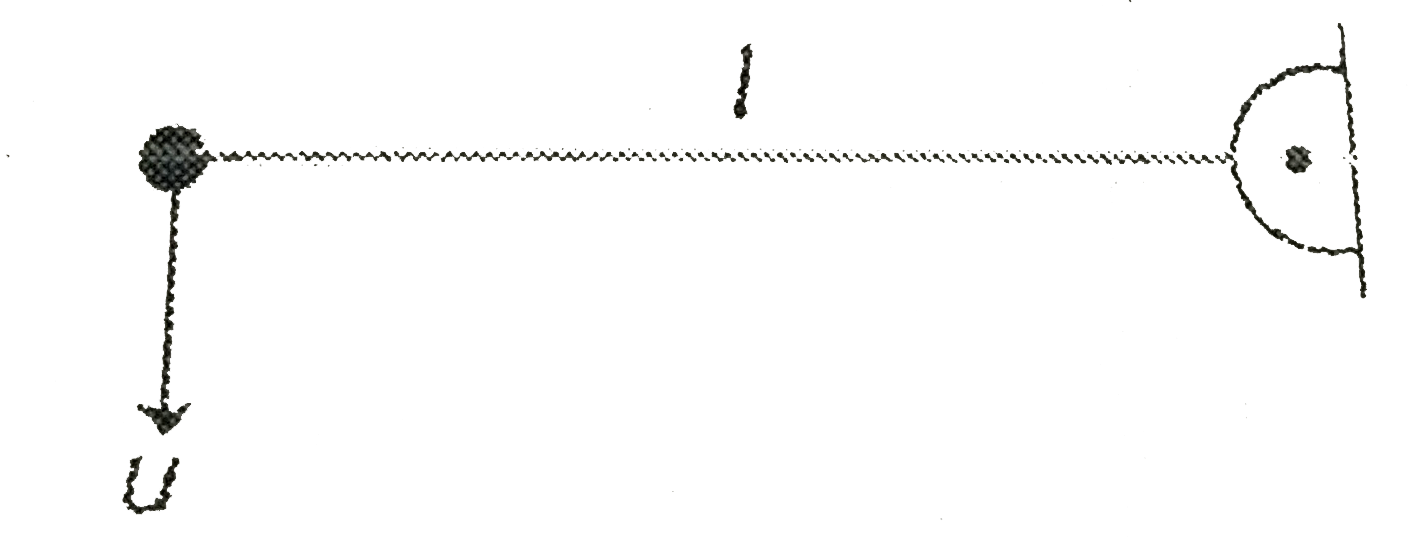 View Solution
View SolutionA 10kg ball attached at the end of a rigid massless rod of lengh 1m rotates at constant speed in a horizontal circle of radius 0.5m and period of 1.58s , as shown in the figure. The force exerted by the rod on the ball is (g=10ms−2)
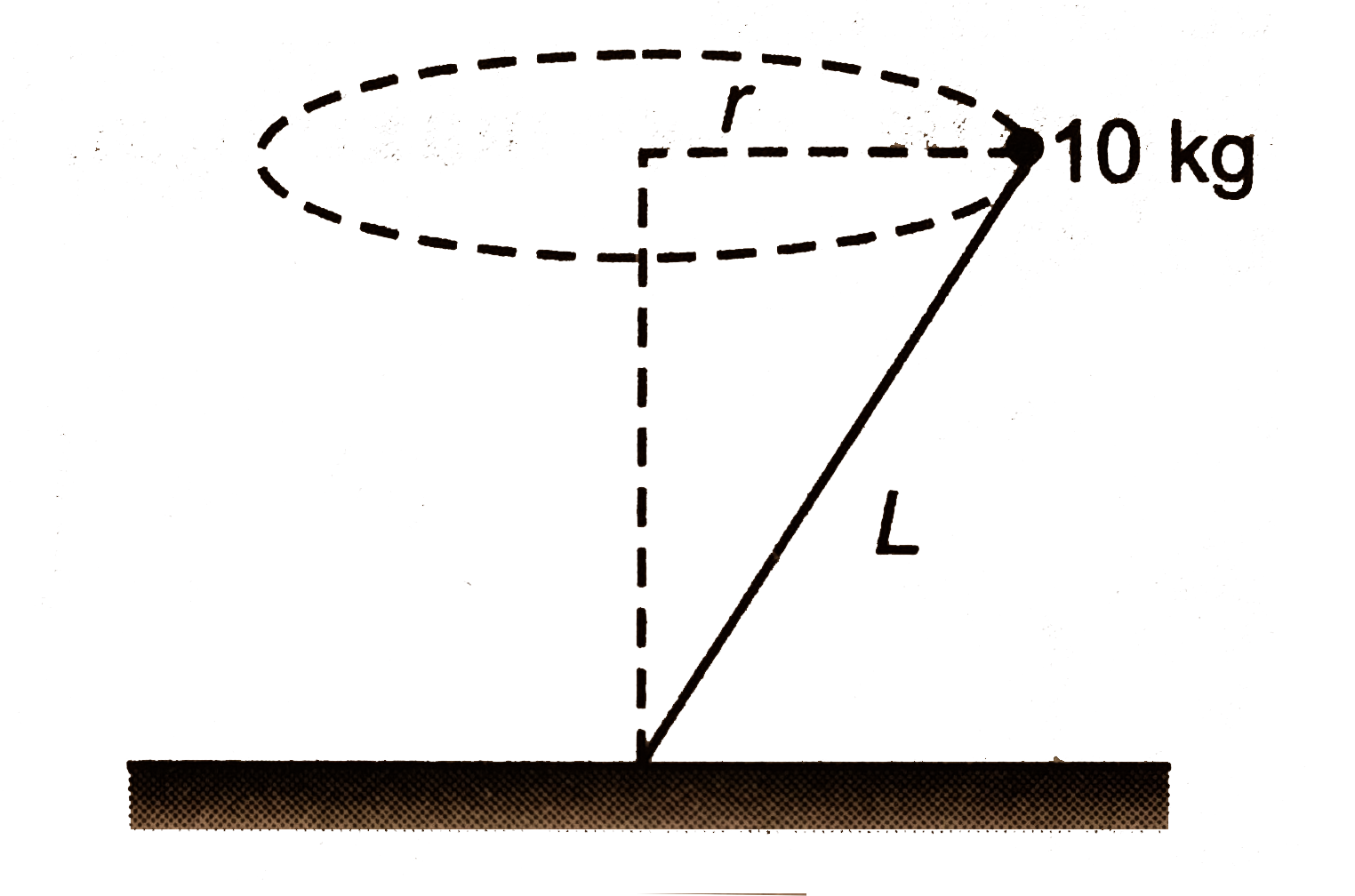 View Solution
View SolutionA shell of mass 1kg is projected with velocity 20m/s at an angle 60∘ with horizontal. It collides inelastically with a ball of mass 1kg which is suspended through a thread of length 1m. The other end of the thread is attached to the ceiling of a trolley of mass 43kg as shown in figure. Initially the trolley is stationary and it is free to move along horizontal rails wihtout any friction. What is the maximum deflection of the thread with vertical? String does not slack. Take g=10m/s2.
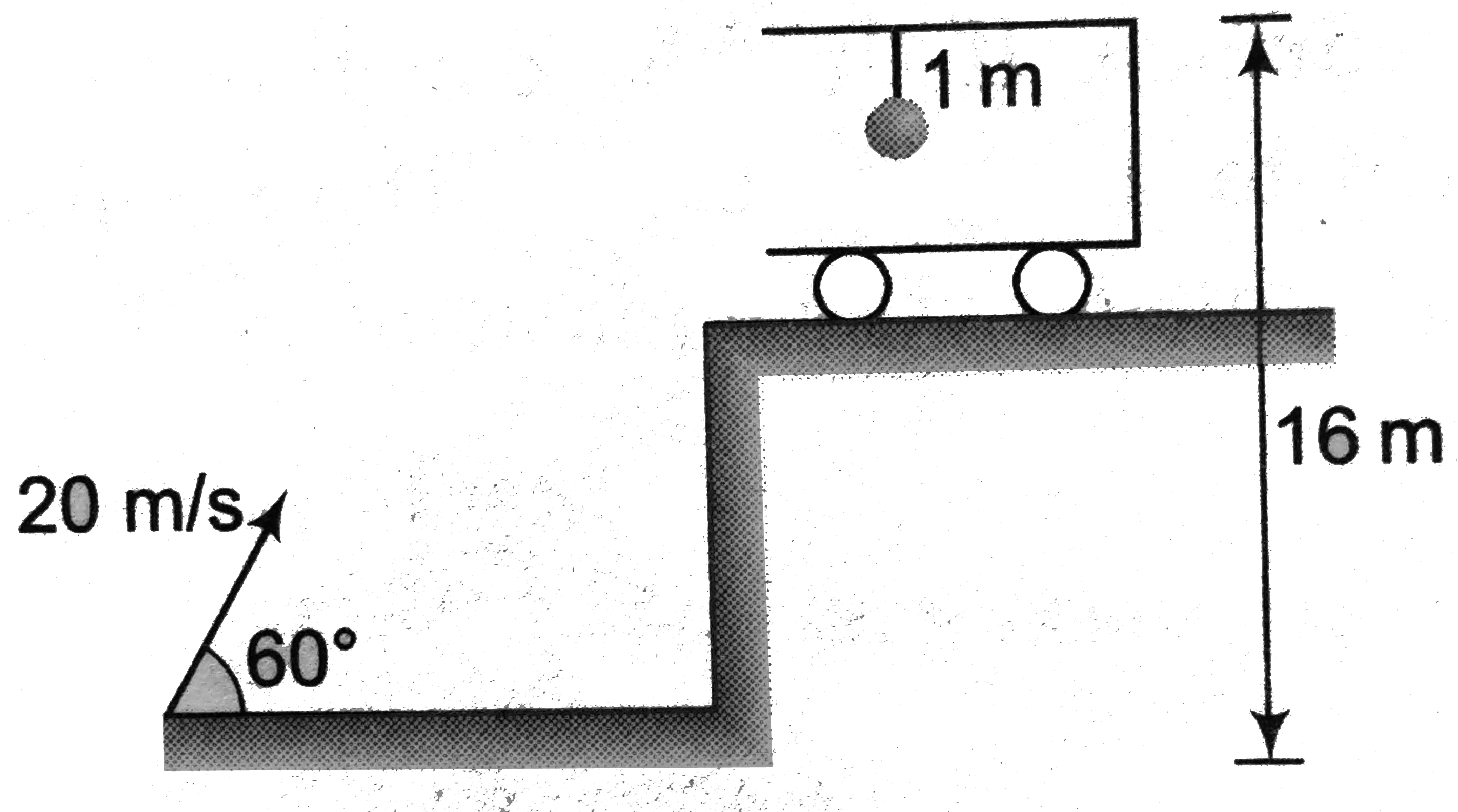 View Solution
View SolutionTwo point masses of 3.0 kg and 1.0 kg are attached to opposite ends of a horizontal spring whose spring constant is 300Nm−1 as shown in the figure. The natural vibration frequency of the system is of the order of :
 View Solution
View SolutionTwo ring of mass m and 2m are connected with a light spring and can slide over two frictionless parallel horizontal rails as shown in figure. Ring of mass m is given velocity 'v0' in horizontal direction as shown. Calculate the maximum stretch in spring during subsequent motion.
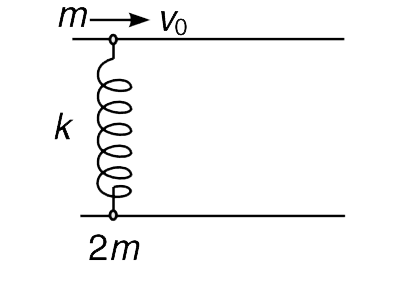 View Solution
View SolutionA ball of mass m kept at the corner as shown in the figure, is acted by a horizontal force F. The correct free body diagram of ball is
 View Solution
View SolutionA heavy block of mass m is supported by a cord C attached to the ceiling, and another cord D is attached to the bottom of the block. If a sudden jerk is given to D, then
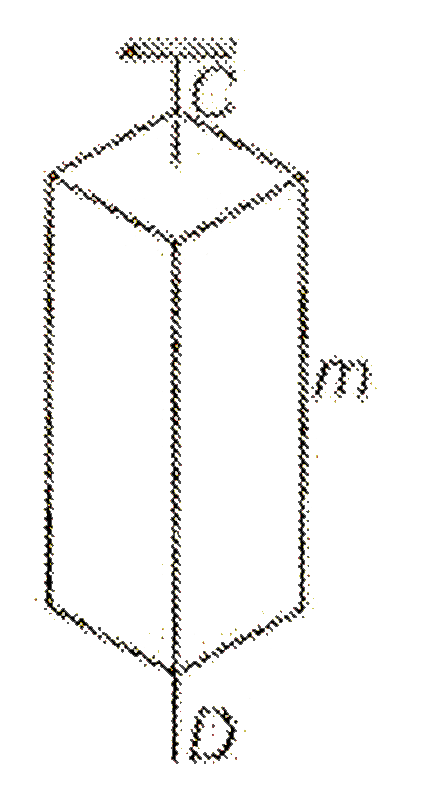 View Solution
View SolutionA small object of mass m, on the end of a light cord, is held horizontally at a distance r from a fixed support as shown. The object is then released. What is the tension in the cord when the object is at the lowest point of its swing?
 View Solution
View Solution

